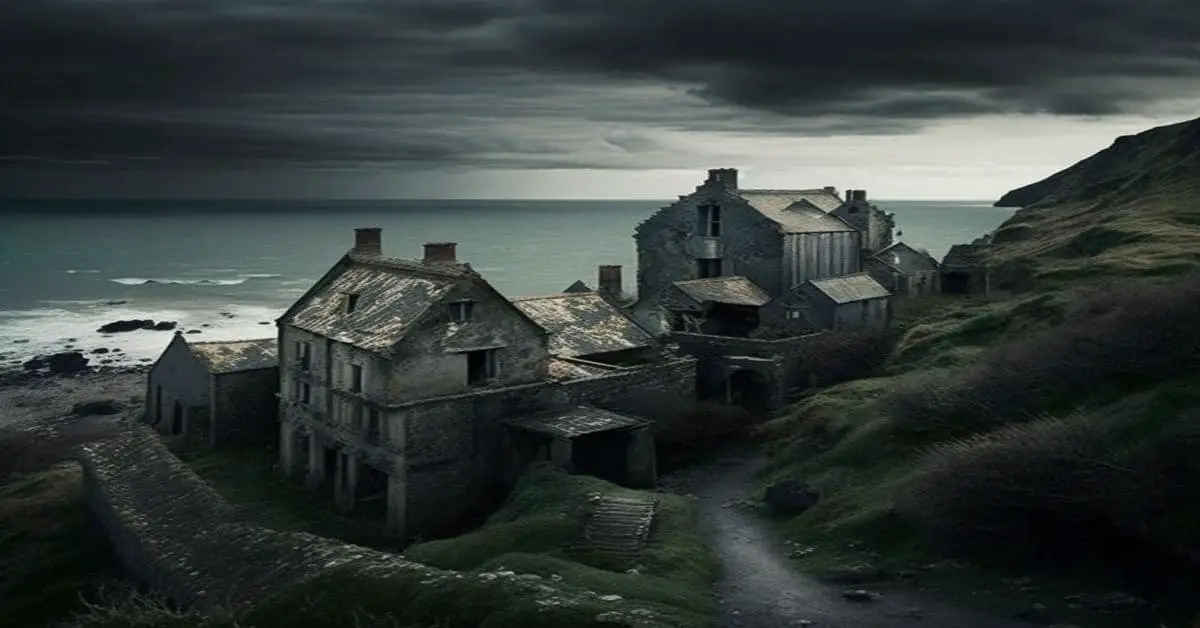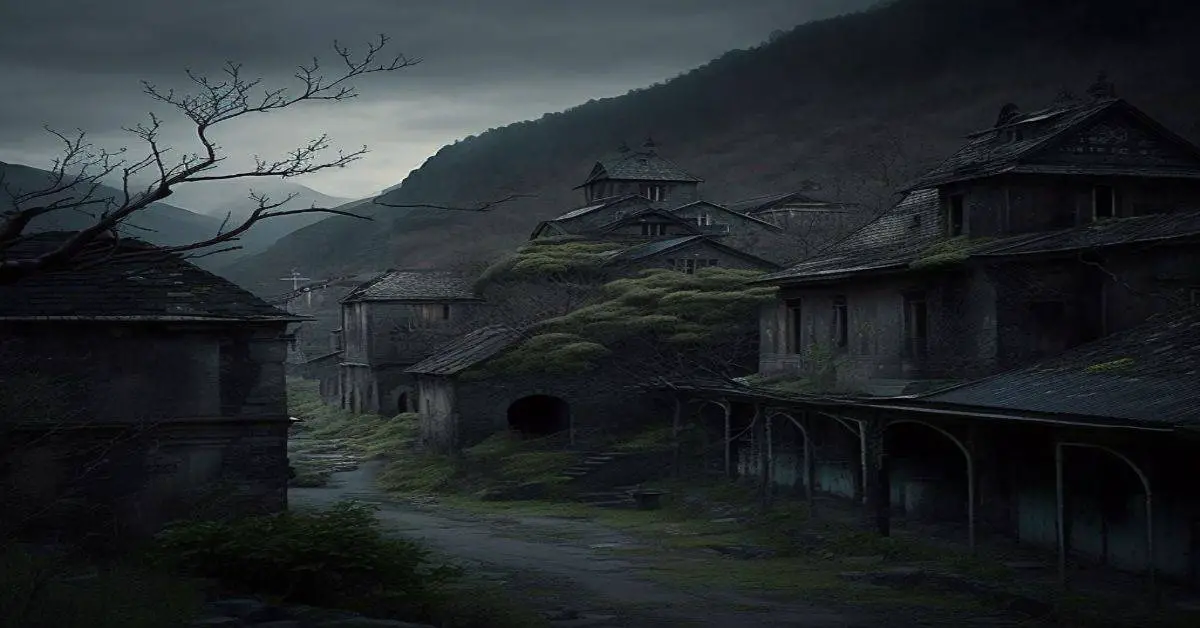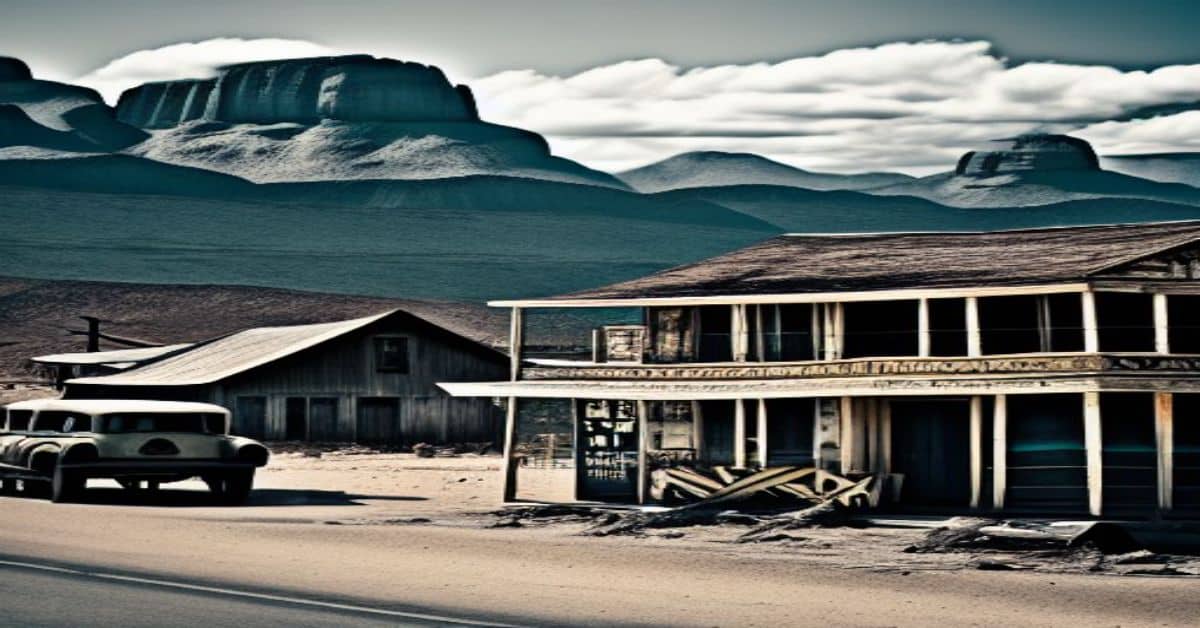Nestled in the arid and desolate landscape of New Mexico, Cuchillo is a small ghost town steeped in history and mystery. Once a bustling trade center and stage stop, the town’s peak population was likely a few hundred people between 1880 and 1930.
Despite the closure of nearby mines, the Cuchillo Store and Bar remains as one of the few original buildings still standing, complete with artifacts and stables for mules and horses. The San Jose Church was rebuilt for the third time in 1907 and still holds mass today.
Cuchillo’s history dates back to the 1850s when ranchers and farmers established the town as a hub for trade. It served as a crucial stop between the Chloride/Winston mines and the Engle railroad, and it was a bustling center of commerce until the nearby mines closed down.
Today, the town stands as a testament to a bygone era, and it offers a glimpse into the lives of the pioneers who settled the area. Visitors can explore the well-preserved landmarks and buildings, including the Cuchillo Store, Bar, and the San Jose Church, and learn about the town’s fascinating history.
With its rich heritage and unique character, Cuchillo is a must-visit destination for anyone interested in the history of the American West.
Key Takeaways
- Cuchillo is a small ghost town in New Mexico that was established in the 1850s as a hub for trade.
- The town’s peak population was likely a few hundred people between 1880 and 1930, but the closure of nearby mines led to its decline.
- The San Jose Church and the Cuchillo Store and Bar are two of the few original buildings still standing and offer insight into the town’s history.
- Visiting Cuchillo provides a unique opportunity to connect with the rich history of the American West, including the lives of ranchers, farmers, miners, and indigenous people.
Location and History
Cuchillo, a ghost town located 15 miles northwest of Truth or Consequences, New Mexico, holds great geographical significance as it functioned as a trade center and stage stop between Chloride/Winston mines and Engle railroad.
The town was established in the 1850s by ranchers and farmers, and its peak population was likely a few hundred people between 1880 and 1930.
The town was named after nearby Cuchillo Negro Creek, which was named after a local Apache chief.
The decline of Cuchillo began with the closure of nearby mines, and the town today serves as a reminder of the history of the American West.
Cuchillo also holds cultural impact as it is one of the few remaining ghost towns in New Mexico.
The San Jose Church, rebuilt for the third time in 1907, still holds mass and is a testament to the town’s religious foundation.
The Cuchillo Store and Bar is one of the original buildings still standing, and it holds many artifacts and stables for mules and horses used to haul freight.
The abandoned dance hall located next to the church is a popular spot for ghost town enthusiasts and historians.
Cuchillo is a fascinating destination for those interested in the history of the American West and those who wish to explore the remnants of a once-thriving town.
Landmarks and Buildings
The remaining landmarks and buildings in this deserted settlement serve as a poignant reminder of the once-thriving community in rural New Mexico.
The Cuchillo Store and Bar is a prime example of the enduring architecture that has withstood the test of time. The store is one of the few original buildings still standing and contains many artifacts that offer a glimpse into the past. The stables for mules and horses used to haul freight are still intact, providing insight into the important role of transportation in the community’s livelihood.
Another notable landmark is the San Jose Church, rebuilt for the third time in 1907 and still holds mass. The church’s architecture is an excellent example of the Spanish Colonial Revival style with its adobe walls and wooden vigas. Adjacent to the church is an abandoned dance hall that offers a glimpse into the community’s social life.
Exploring these artifacts and appreciating the architecture of these remaining buildings provides a unique way to connect with the history of this once-bustling community.
Visiting and Exploring
Despite its remote location, exploring the remnants of Cuchillo offers a unique opportunity to connect with the rich history of the American West, making it worth the effort to visit.
The town’s landmarks and buildings provide a glimpse into the lives of the ranchers, farmers, and miners who settled in the area in the 19th and early 20th centuries.
Visitors can step inside the Cuchillo Store and Bar, which is one of the few original buildings still standing, and marvel at the artifacts on display. The store also features stables for mules and horses used to haul freight, providing a glimpse into the transportation methods of the time.
The San Jose Church, rebuilt for the third time in 1907, is still in use today and offers a chance to experience the local culture through mass celebrations.
Aside from exploring the landmarks and buildings, visitors can also engage in activities that allow them to immerse themselves in the town’s history.
A popular activity is hiking along the nearby Cuchillo Negro Creek, named after a local Apache chief. This provides a chance to see the area’s natural beauty and imagine what life was like for the indigenous people who first inhabited the land.
Ghost town enthusiasts and historians can also enjoy the abandoned dance hall located next to the church, which is a testament to the town’s once-thriving social scene.
Overall, a visit to Cuchillo is a unique experience that allows visitors to connect with the past while enjoying the natural beauty of the American West.
Frequently Asked Questions
What were the primary industries in Cuchillo besides ranching and farming?
Besides ranching and farming, mining and timber were primary industries in Cuchillo. The town served as a trade center and stage stop between Chloride/Winston mines and Engle railroad, and nearby timber was used for building and fuel.
Are there any legends or ghost stories associated with Cuchillo?
Despite its reputation as a popular spot for ghost town enthusiasts, no recorded ghost stories or paranormal activity are associated with Cuchillo. The town’s haunted history and supernatural encounters remain folklore and legends.
What happened to the original settlers and their descendants after the decline of Cuchillo?
The fate of the descendants of original settlers of Cuchillo after the town’s decline is unknown. However, economic alternatives such as agriculture and tourism have been explored in the area to sustain the community.
Has any archaeological research been conducted in Cuchillo to uncover more about its history?
Possible research on Cuchillo’s history has not been extensively conducted, potentially due to its status as a ghost town. However, further archaeological investigations could shed light on its cultural significance and provide insight into the lives of its former residents.
Are there any plans or efforts to restore or preserve the remaining buildings in Cuchillo?
Preserving Cuchillo’s remaining buildings has been a community effort, with the Cuchillo Preservation Society working to restore the historic Cuchillo Store and Bar. There are also plans to restore the San Jose Church and other buildings as funds become available.


